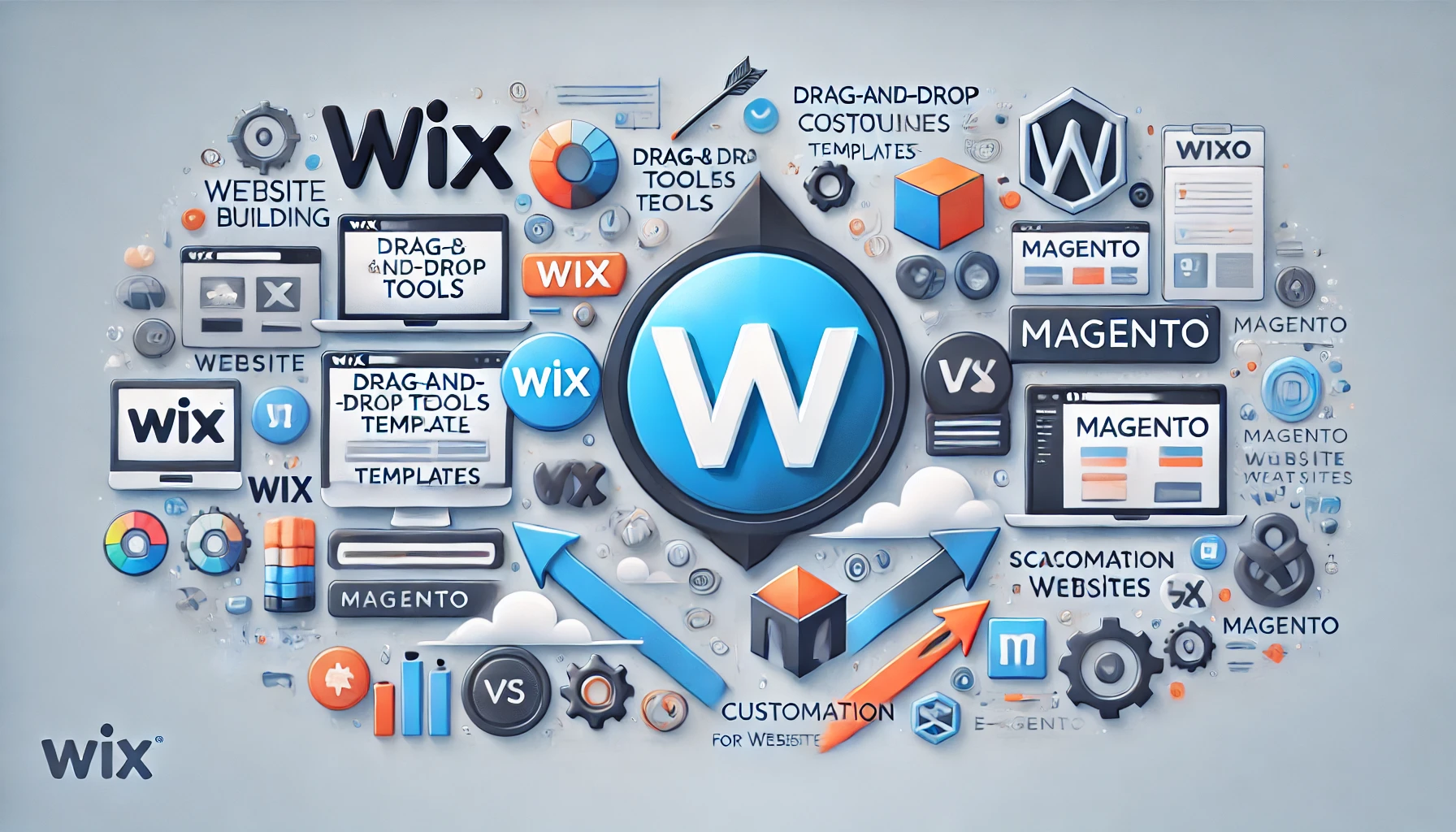How to Migrate from WooCommerce (WordPress) to Shopify: A Complete Step-by-Step Guide with Tools
Migrating from WooCommerce (WordPress) to Shopify can significantly improve your store’s performance, ease of use, and scalability. Shopify is a robust platform designed specifically for e-commerce, offering a streamlined, secure environment for growing businesses. However, making the switch requires careful planning, the right tools, and precise execution to avoid data loss, SEO issues, and downtime.
In this article, we’ll walk you through the entire process of migrating from WooCommerce to Shopify, including essential tools and resources that can simplify each step. Whether you have a small store or a large catalog, this guide will provide you with all the necessary information to ensure a successful transition.
Table of Contents
- Why Migrate from WooCommerce to Shopify?
- Benefits of Shopify Over WooCommerce
- Addressing WooCommerce’s Limitations
- Business Growth and Scalability
- Pre-Migration Checklist
- Backup Your WooCommerce Store
- Organize Your Data
- Choose a Shopify Plan
- Set Up Your Shopify Account
- Choosing the Right Migration Tools and Methods
- Manual Migration
- Using a Migration App or Service
- Professional Migration Services
- Step-by-Step Guide to Migrating WooCommerce to Shopify
- Set Up Your Shopify Store
- Migrate Products
- Migrate Customers and Orders
- Migrate Content (Blogs, Pages)
- Migrate Your Store Design
- Set Up Payment Gateways and Shipping
- Test Everything
- Handling SEO During the Migration
- Importance of SEO in Migration
- 301 Redirects: How to Prevent SEO Loss
- Updating Sitemap and Google Search Console
- Post-Migration Checklist
- Final Testing
- Launching Your Shopify Store
- Promoting the New Store
- Common Challenges and How to Overcome Them
- Data Loss and Inconsistencies
- Design and Theme Issues
- Customer and Order Data Accuracy
- Best Migration Tools for WooCommerce to Shopify
- Cart2Cart
- LitExtension
- Shopify’s Native Import Tool
- Migrating from WooCommerce to Shopify FAQs
1. Why Migrate from WooCommerce to Shopify?
Benefits of Shopify Over WooCommerce
When deciding to migrate from WooCommerce to Shopify, it’s important to consider the advantages Shopify offers. Shopify is a fully hosted solution, meaning it manages everything from hosting, security, and updates to backups, leaving you with more time to focus on growing your business.
- Ease of Use: Shopify is user-friendly with a drag-and-drop interface, whereas WooCommerce requires more technical knowledge for setup and ongoing maintenance.
- Security: Shopify handles PCI DSS compliance and security patches automatically. In contrast, WooCommerce stores are self-hosted and require you to manage security.
- Performance: Shopify is optimized for high performance, ensuring that your store loads quickly, even during high traffic periods.
Addressing WooCommerce’s Limitations
While WooCommerce is a great platform for smaller stores or those who already use WordPress, it does have some drawbacks:
- Scalability Issues: As your store grows, WooCommerce can slow down due to the complexities of WordPress plugins and themes.
- Technical Maintenance: With WooCommerce, you are responsible for regular updates, backups, and handling technical issues. Shopify, however, handles everything for you.
Business Growth and Scalability
If you’re scaling your business, Shopify provides advanced features that make it easy to manage thousands of products, handle global sales, and integrate with major marketplaces like Amazon and eBay. Shopify also offers built-in marketing tools like SEO optimization, email campaigns, and customer loyalty programs.
2. Pre-Migration Checklist
Backup Your WooCommerce Store
Before starting any migration process, it’s essential to back up all your store’s data (products, orders, customers, content, etc.). Use a plugin like UpdraftPlus or BackupBuddy to back up your WooCommerce store.
Organize Your Data
Make sure you have all your data organized and ready for migration. Identify the following:
- Products: Names, prices, categories, descriptions, and images.
- Customers: Emails, shipping addresses, purchase history.
- Orders: Order numbers, statuses, products ordered.
- Content: Blog posts, pages, and media files.
Create a spreadsheet or CSV file with this data to ensure that it’s easy to import into Shopify.
Choose a Shopify Plan
Shopify offers several pricing tiers, each with different features. Choose the plan that best suits your business needs. The Basic Shopify plan is great for smaller stores, while the Advanced Shopify plan is suited for larger businesses with more complex needs.
Set Up Your Shopify Account
Before migrating, make sure you’ve set up your Shopify store with the following:
- Your business information (address, contact details).
- Payment gateway preferences (PayPal, Shopify Payments, etc.).
- Shipping settings (rate calculations, delivery options).
3. Choosing the Right Migration Tools and Methods
Manual Migration
If your store is small, manual migration might be a good option. This involves copying over products, customers, and orders manually into Shopify. While this method is free, it’s time-consuming and prone to errors, especially if you have a large catalog.
Using a Migration App or Service
For a seamless migration, consider using an app or migration tool. These tools automate much of the process, transferring data directly from WooCommerce to Shopify.
Some popular migration tools include:
- LitExtension: One of the most widely used WooCommerce to Shopify migration tools. LitExtension offers automated migration of products, customers, orders, reviews, and other data.
- Cart2Cart: Another automated service that supports WooCommerce to Shopify migration. Cart2Cart allows you to migrate store data without losing SEO value.
- Shopify’s Native Import Tool: Shopify provides its own CSV importer that lets you manually import products, customers, and orders from WooCommerce.
Professional Migration Services
If you prefer a hands-off approach, hiring a professional service may be the best option. Shopify Experts or agencies specialize in migrating stores and ensuring the entire process is done with minimal disruption. Services like Shopify Plus Migration can handle complex migrations for large stores.
4. Step-by-Step Guide to Migrating WooCommerce to Shopify
1. Set Up Your Shopify Store
Start by signing up for a Shopify account. Choose your store’s theme, customize it to fit your brand, and configure essential settings such as tax rates, payment gateways, and shipping rules.
2. Migrate Products
Using a tool like LitExtension or Cart2Cart, begin migrating your products to Shopify. Ensure that product names, prices, images, descriptions, and SKUs are transferred correctly.
3. Migrate Customers and Orders
After migrating products, use the same tool to import customer data, including their account details, order history, and addresses. This ensures that your customers can continue shopping smoothly.
4. Migrate Content (Blogs, Pages)
If you have blogs or informational pages on your WooCommerce site, you will need to migrate them manually or use a plugin. Shopify supports blog posts, but you’ll need to copy and paste content from your WooCommerce blog into Shopify’s content editor.
5. Migrate Your Store Design
Shopify offers hundreds of themes that can be customized to resemble your WooCommerce store. If your design was highly customized on WooCommerce, you may need to use Shopify’s Liquid templating language to replicate it.
6. Set Up Payment Gateways and Shipping
Ensure that payment gateways (like Stripe, PayPal, and Shopify Payments) and shipping methods are set up according to your business requirements.
7. Test Everything
Before launching your store, conduct a thorough test of all aspects of your Shopify store. Test product functionality, order placement, payment processing, and customer account creation.
5. Handling SEO During the Migration
Importance of SEO in Migration
SEO is essential for maintaining your rankings and ensuring that customers can find your new store on Google. Migration is a risky time for SEO, but with the right steps, you can preserve most of your traffic and avoid losing organic search rankings.
301 Redirects: How to Prevent SEO Loss
Use 301 redirects to redirect your old WooCommerce URLs to your new Shopify URLs. This tells search engines that your pages have permanently moved, ensuring that your SEO value is preserved. Apps like SEO Redirect Manager can help automate this process.
Updating Sitemap and Google Search Console
Once your migration is complete, update your sitemap and submit it to Google Search Console. This will help Google crawl your new Shopify store and index it faster.
6. Post-Migration Checklist
Final Testing
Once everything is migrated, conduct a final round of testing on your Shopify store. Test all aspects, from product displays to checkout, to ensure everything functions properly.
Launching Your Shopify Store
Once you’re happy with the setup and testing is complete, it’s time to launch your store! Make sure to inform your customers via email or social media about the switch to Shopify.
Promoting the New Store
After launch, focus on promoting your new Shopify store. Run ads, email campaigns, and social media promotions to drive traffic and sales.
7. Common Challenges and How to Overcome Them
Migrating from WooCommerce to Shopify can present challenges, such as:
- Data Loss: Always back up your store and perform test migrations.
- Design Compatibility: Shopify themes might differ from your WooCommerce design, requiring custom adjustments.
- Customer Data: Double-check customer orders, email addresses, and other sensitive data after migration.
8. Best Migration Tools for WooCommerce to Shopify
- Cart2Cart: Automated, reliable, and supports many data types.
- LitExtension: Offers a variety of migration tools with dedicated support.
- Shopify’s CSV Import Tool: Ideal for smaller stores or manual migrations.
9. Migrating from WooCommerce to Shopify FAQs
1. How long does it take to migrate from WooCommerce to Shopify?
The time varies depending on the store size, but it generally takes between a few days to a week.
2. Can I keep my old WooCommerce store running while migrating?
Yes, you can keep your WooCommerce store live while migrating to Shopify.
3. Will my SEO rankings be affected during migration?
If done correctly (using 301 redirects and proper URL mapping), your SEO rankings should remain intact.
4. Can I migrate customer passwords?
No, customer passwords cannot be transferred. Customers will need to reset their passwords on the new Shopify site.
5. Do I need a developer to migrate my store?
While not necessary, a developer can help streamline the migration process, especially if you have complex needs.
6. What if I encounter issues after migration?
Shopify offers 24/7 customer support for any issues you encounter post-migration.




